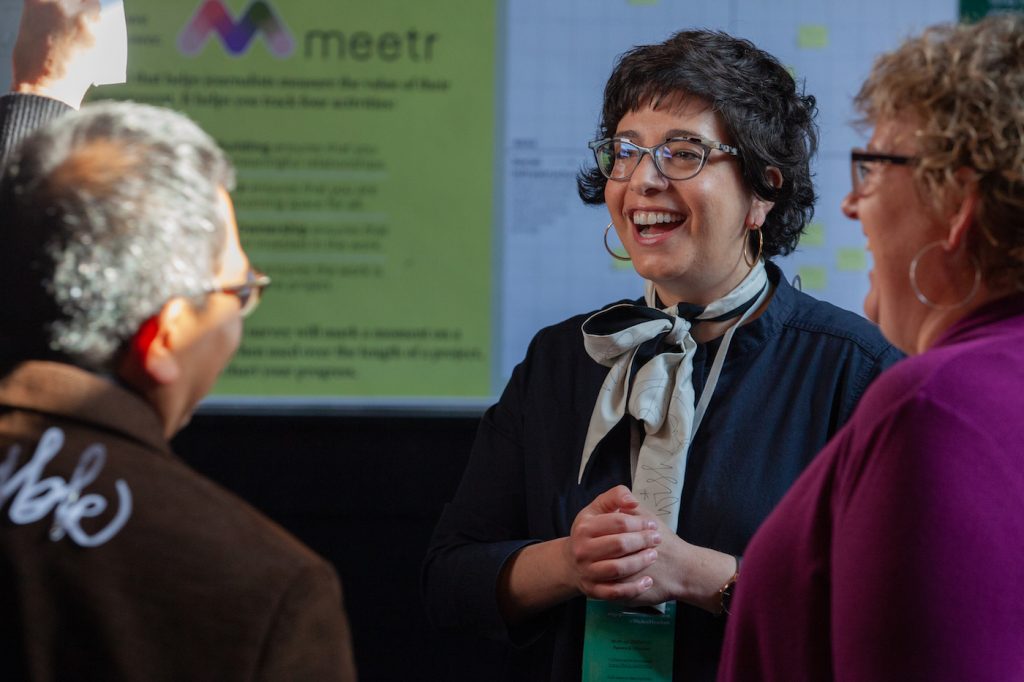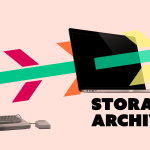
From Lecturing, to Listening, to Relational: The Necessary Evolution of Engagement
By Jennifer Brandel
Ask anyone in a news organization what they mean when they use the word “engagement” and you’ll get a variety of answers. For managers, they may be counting page views, scroll-depth, or how many shares a story receives. For a reporter, they may equate engagement with the level of conversation their work generated, in the places they were hoping to be noticed. For staff tasked with keeping the lights on, they’re likely to view engagement through conversions of people who clicked “donate” on the website; or how many people signed up for a newsletter or other forms of becoming more loyal and brand-connected.
The very fact that the word “audience” is still the typical precursor to the word “engagement” points to a mental model that’s imperiled; one of “us and them.”
Nobody is wrong when they use engagement in such varied ways. The industry is still crystalizing the mental models, framing and language that will hopefully usher more sophisticated, nuanced and accurate descriptions for what counts as engagement; as well as what of value can be measured and what cannot. The very fact that the word “audience” is still the typical precursor to the word “engagement” points to a mental model that’s imperiled; one of “us and them.” “Us” here being the people inside the newsroom, making decisions on behalf of “them”, the people reading, listening or watching the work. With this comes a separation of duty, abilities and power.
The most radical companies and technologies are doing away with separating the public from the newsroom, instead treating everyone inside and outside as potential contributors to the editorial depth, diversity, relevance and financial strength of the organization.
As new constructs and language begin to settle into common use, I’d like to offer a few ways of seeing “audience engagement” as it relates to the ways we relate; and the tech we choose to support its many flavors. When it comes to connecting with the people the newsroom is hoping to reach and serve (yes, a much clunkier phrase than “audience”), I see three major categories for engagement: extractive, transactional and relational.
The extractive form of engagement is where the value generated overwhelmingly favors the organization. There is no direct value to the person or community being engaged. An example: the ad tech fuelling all the pop-ups, videos and sign-ups that then clog up news websites in order to extract value from the attention of the person looking for news information.
Transactional engagement is where the context for engagement is clear, and there’s an agreed upon exchange between the organization and the individual. Newsrooms ask the public to supply X for Y reason, and the public finds enough value in the ask, or potential reward, to accommodate. In transactional engagement, the newsroom has already predetermined a menu of options and wants the public to pick among them. The power is still largely in the newsroom’s court.
Relational engagement is the most open-ended, in which the goal is co-creation, building trust, and generating new ideas that the newsroom didn’t know that it didn’t know. This might mean a newsroom takes on answering questions in partnership with the people who ask; or creates spaces for community conversation that results in new coverage; or builds diverse advisory groups that have real power in shaping newsroom thinking and products, without being reigned in by a strict agenda.
The most distinctive and original content often comes from relational, co-creative work.
Another lens through which to view engagement is by what role you’re asking the public to play, and how you’re measuring that success. There are four major roles the “audience” can typically play: consumer, marketer, co-creator, and shareholder. When we view the public as a consumer, we’re counting how much they watch, listen, click, come back, etc. When we look at them as a marketer, we’re tracking how much they share, mention, like, retweet, etc. When we work with them as a co-creator, we do relational engagement for which there isn’t yet industry-agreed upon standards, beyond a knowing in a journalist’s heart that everyone was the better for it, and some deeper understanding emerged. The most distinctive and original content often comes from relational, co-creative work. The last lens is looking at the public as a shareholder, and seeing how they engage financially with the organization, be that through a membership, subscription, attending events, buying swag, etc.
When you treat the public as a co-creator, and focus on relational engagement, consumption naturally increases, the people involved become the organization’s greatest marketers, and they are also much more likely to become a financial supporter
What we’ve found at Hearken, through eight years of experimentation, is when you treat the public as a co-creator, and focus on relational engagement, consumption naturally increases, the people involved become the organization’s greatest marketers, and they are also much more likely to become a financial supporter. That lever is very powerful, but requires a mental model in which it’s not an “us and them” attitude, and the workflows and technology of the newsroom allow for an exchange that builds 1:1 relationships.

So this is all to say: when it comes to the technology you choose to power your engagement efforts, there are many factors to consider beyond the usual questions around price, implementation, integration and scaling. It’s wise to consider the type of engagement the product is built to drive. If it’s extractive engagement, you’ll want to think twice as this imbalanced power dynamic can undermine efforts to repair trust and build long-term relationships. If it’s transactional, consider how this product is framing the mental model for who the public is, their role in relation to your newsroom, and how much power they have in the relationship.
Many of the biggest challenges in choosing and implementing engagement tech also present the greatest opportunities.
Beyond the cultural and mindset shift that can accompany some engagement software, many of the biggest challenges in choosing and implementing engagement tech also present the greatest opportunities. If you are able to align your databases of emails and interest coming through your editorial arm with your financial arm, the newsroom can begin shifting its position on the balance sheet from being a cost-center to a revenue generator. This takes cross-departmental collaboration, ensuring you’re following best practices in data and privacy laws, and that editorial understands how important it is to make engagement an ethical and strategic priority.
Other things to consider when choosing software: how is the company that provides the software funded? If they’re backed by venture capital, they’re going to have a lot of pressure to grow fast, and with journalism not exactly being a lucrative market, they may decide to pivot or prioritize other markets ahead of the specific needs of the newsroom. Check their privacy policy and data use. If the software is very cheap or free, it may be that way because they’re selling your audience’s data to other parties to make their money. Suffice it to say, this is not a good look for news organizations. It’s also worth looking into whether or not the software is entirely self-service, or if there are humans who you can work with, support staff in implementation, and offer ongoing consultation around engagement best practices. Understanding how a product works in a demo, and at some point making it a seamless part of the newsroom workflow, often takes a lot of hand-holding, troubleshooting, incentivizing and encouragement. If the company does not provide that along with the product, make sure someone in your newsroom is responsible for ensuring you’re getting the value from it. Lastly, you’ll want to understand the true costs associated with open source software, especially as it relates to security and privacy laws. Many newsrooms may have staffers with some degree of functional coding knowledge, even if they’re not full-time engineers. But the temptation to run open source software because it appears to be free, can result in expensive upkeep down the line.
The good news with “audience engagement” is that human nature is geared toward reciprocity, wanting to interact, be in relationships, and contribute to something bigger than themselves. So what you won’t have to wonder is whether or not to invest in engagement as a strategy, but rather, how much, how fast and how deeply.

Jennifer Brandel
CEO and Co-founder of Hearken
Jennifer Brandel (@JenniferBrandel) is CEO and Co-founder of Hearken, a company that helps organizations around the world develop and operationalize participatory processes. Hearken took home the prize for “Best Bootstrap Company” at SXSW and won the News Media Alliance Accelerator. Brandel received the Media Changemaker Prize by the Center for Collaborative Journalism, was named one of 30 World-Changing Women in Conscious Business, is a Columbia Sulzberger Fellow, an RSA Fellow and a member of the Guild of Future Architects. Brandel is co-founder of Zebra’s Unite, a global movement and network of entrepreneurs, funders, investors and allies creating a more ethical, inclusive and collaborative ecosystem for mission-based startups. She also co-founded Civic Exchange Chicago which brings together civic startups in a collaborative learning community.



